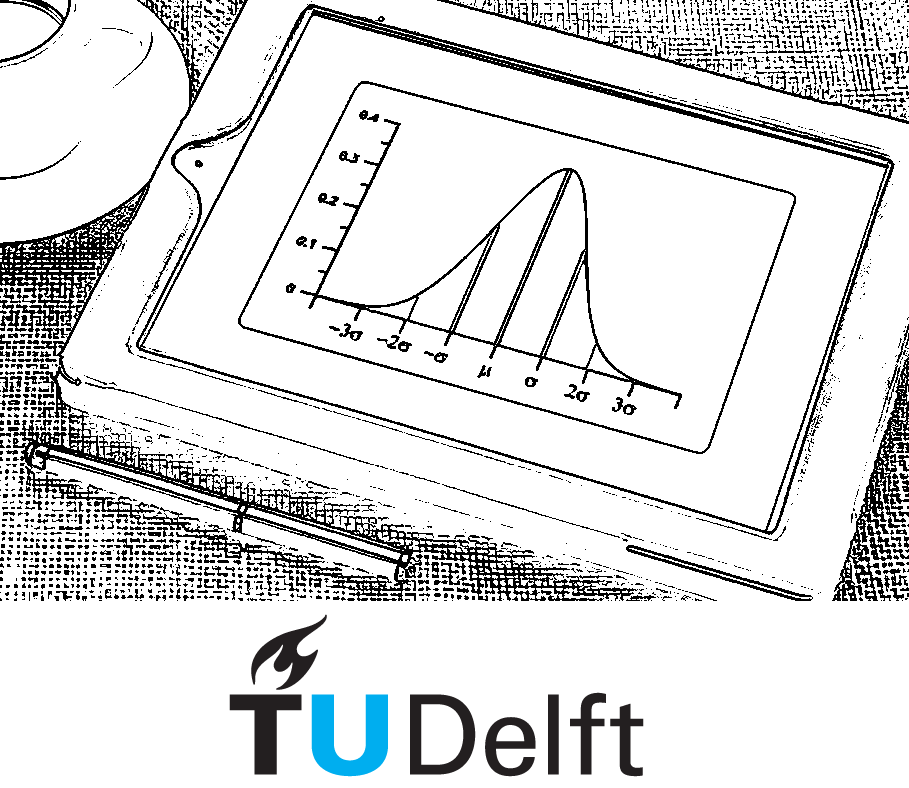Maximum Likelihood Estimation 2#
1. Theory#
The theory used here is similar to that discussed in MLE_1 in 1. Theory . Here is a recap of steps to follow when finding the maximum likelihood estimate:
Define the likelihood function \(L(\theta \mid \mathbf{x})\).
Take natural logarithm of the likelihood function to get the log-likelihood function \(\ln (L(\theta \mid \mathbf{x}))\).
Differentiate the log-likelihood function and set it to zero: \(\frac{\partial L(\theta \mid \mathbf{x})}{\partial \theta} = 0\).
Solve the equation for \(\hat{\theta}\).
2. Wave heights#
Insert image? Exercise is from the prob design exam January 2019.
A group of coastal and offshore engineers is interested in modelling wave heights. They decide to investigate the water level Z as the sum of two random variables:
a) X: Significant wave height in m and
b) Y: Storm surge also in m
As an initial model, they decide that both X and Y are independent and identically distributed. In fact they model them as exponentially distributed with parameter \(\theta\). That is \(f_X(x)=\theta e^{-\theta x}\) and \(f_Y(y)=\theta e^{-\theta y}\).
Show with clear calculations that \(f_Z(z)=\theta^2 z e^{-\theta z}\).
Show with clear calculations an expression for \(\hat{\theta}\), the Maximum Likelihood Estimator of \(\theta\) based on \(f_Z(z)\).
1. Show with clear calculations that \(\mathbf{f_Z(z)=\theta^2 z e^{-\theta z}}\).
We know that X and Y are independent, and \(Z = X + Y\), so we can write \(f_X(x) = f_X(z-y)\) and $\(f_Z(z)=\left(f_X \otimes\right. \left.f_Y\right)(z) =\int_{-\infty}^{+\infty} f_X(z-y) f_Y(y) d y=\int_0^z\left(\theta e^{-\theta(z-y)}\right)\left(\theta e^{-\theta(y)}\right) d y =\theta^2 \int_0^z e^{-\theta(z-y)-\theta y} d y=\theta^2 \int_0^z e^{-\theta z} d y=\theta^2 z e^{-\theta z}\)$
2. Show with clear calculations an expression for \(\hat{\theta}\), the Maximum Likelihood Estimator of \(\theta\) based on \(f_Z(z)\).
The likelihood function can be written as: $\(L\left(z_1, z_2 \ldots z_n ; \theta\right)=\prod_{i=1}^n f_Z\left(z_i ; \theta\right)=\theta^{2 n} \exp \left(\sum_{i=1}^n-\theta z_i\right) \prod_{i=1}^n z_i\)$
Taking natural logarithm of the likelihood function, the log-likelihood is: $\(\ln \left(L\left(z_1, z_2 \ldots z_n ; \theta\right)\right)=2 n \ln (\theta)+-\theta \sum_{i=1}^n z_i+\ln \left(\prod_{i=1}^n z_i\right) \)$
Setting the derivative of the log-likelihood function equal to zero: $\(\frac{d\left(\ln \left(L\left(x_1, x_2 \ldots x_n ; \theta\right)\right)\right)}{d \theta}=\frac{2 n}{\theta}-\sum_{i=1}^n z_i=0\)$
Solving for the maximum likelihood estimate \(\hat{\theta}\), we obtain \(\hat{\theta} = \frac{2n}{\sum_{i=1}^n z_i}\).
3. Buckling of Steel Columns#
A structural steel manufacturer company carried out an inspection on the steel beams it’s producing. Out of the 100 selected samples, 9 did not meet the buckling requirements.
Assuming that the dataset can be described by the binomial distribution with unknown parameter \(\theta\), the PMF is given by:
\(p_x(x,\theta)={n \choose x} \theta^x (1 - \theta)^{n-x}\)
In this exercise, you can test your understanding of the maximum likelihood estimation of the probability of a flawed observation based on the given data.
Is \(L(\theta) = \theta^x (1 - \theta)^{n-x}\) a correct likelihood function? T/F
Could be a fun fact to add that \({n \choose x}\) doesnt depend on \(\theta\) so can be omitted.What is the maximum likelihood estimate of the probability of a flawed observation based on the given data?
0.09, same as x/n wow cool
